Ask a Jeweler: A Buyer’s Guide to Diamonds
by Anna Rasche
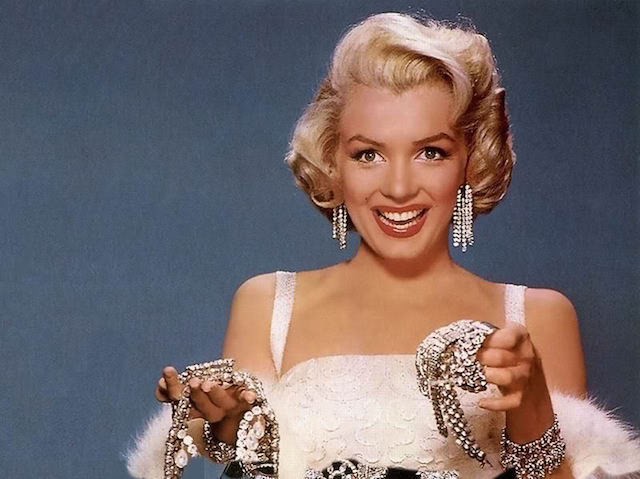
This is the second installment in a series about diamonds. For part one, click here.
As you can see by Marilyn’s facial expression, buying a diamond is equal parts exciting and confusing. I’ve tried to answer some FAQs to help you get the best diamond for your hard-earned money.
How is the quality of a diamond determined? How do these factors affect price?
The price of a diamond is directly related to its rarity. The more difficult it is to find and manufacture a particular diamond, the more expensive the diamond will be. A stone’s rarity is majorly determined by its carat weight, color, clarity and cut, otherwise known as “the 4Cs.” Let’s go through them:
CARAT WEIGHT
Just like deli meat, diamonds are priced by weight. A carat is a unit of measurement used to express the weight of gemstones. It’s equal to 200 milligrams; it is not to be confused with karats or carrots. It is more rare for miners to uncover big giant diamonds than small, baby diamonds, therefore with all other factors being equal, the higher the carat weight, the pricier the diamond.
How do I use this knowledge to spend less money?
There are these things called “magic numbers.” I’m serious. They fall at 0.5cts, .75cts, 1ct, and then at .5ct intervals moving forward (1.5cts, 2cts, 2.5cts etc.). What makes these numbers magic, is that they represent a significant jump in a diamond’s price per carat. By considering slightly lower carat weights (maybe a .9ct diamond instead of a 1ct diamond) you could find significant savings and a quite indistinguishable visual difference in the size of your diamond.
COLOR
Diamonds naturally occur in a wide variety of colors, but the majority fall into the “colorless” category. To be considered a colorless diamond, a stone’s hue needs to place it somewhere on a color gradient called the “D-Z scale.” D-colored diamonds are completely colorless, and as you go down the alphabet towards Z, the stones will have a more and more obvious yellowish tint to them. If a diamond is straight up yellow, pink, blue, etc., it is known as a “fancy-colored diamond.” Colorless diamonds that fall near the top of the D-Z scale, and fancy-colored diamonds with excellent saturation are the most rare, and therefore the most pricey option in terms of color.

How do I use this knowledge to spend less money?
Look at the diamond with your eyes. Just because the internet tells you not to get lower than an “H” color doesn’t mean you should listen! Maybe you like the way an M-colored stone looks. If you’re setting your diamond in yellow gold, the diamond will look whiter by comparison anyhow.
CLARITY
Most diamonds have little bits of stuff in them, and the more bits of stuff a diamond contains the more “included” it is. These inclusions have fun names like crystals and feathers and clouds. There is even one called “Twinning Wisps.” GIA developed a clarity scale to define how visually prominent the inclusions are in a diamond:
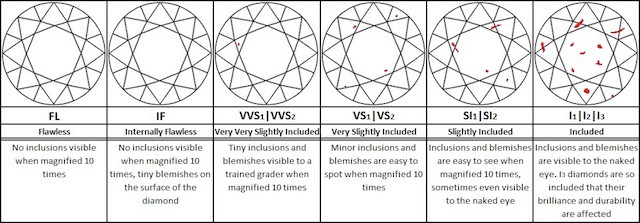
The less prominent a diamond’s inclusions, the more rare it is. That would make a flawless diamond priciest and rarest of all possible clarity grades.
How do I use this knowledge to spend less money?
If you can only bring yourself to compromise on one C, make it clarity. In most diamonds that receive a clarity grade of SI2 or higher from the GIA, the inclusions will not be prominent enough to see with the naked eye. By lowering your clarity standards, you can save thousands of dollars and get a diamond that doesn’t look any different in a piece of jewelry. Even stones that fall in the “Included” category can be worth considering if you don’t mind being able to see an inclusion or two.
CUT
Cut refers both to the actual shape of the diamond, and the skill with which that shape is achieved. The terminology behind diamond shapes can get really complicated, but the standard cuts read sort of like a boring version of Lucky Charms — hearts, rounds, pears, squares and marquis — you get the idea:
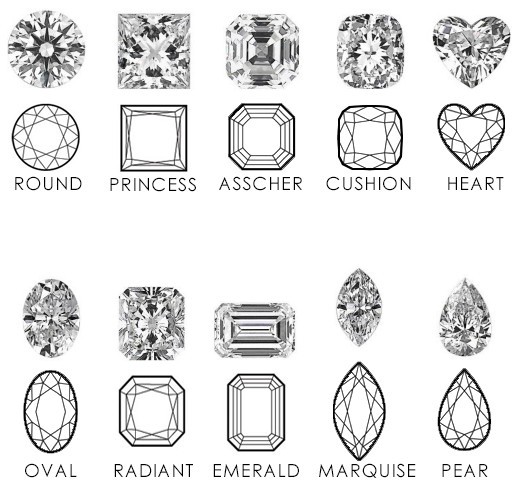
Some popular diamond cuts
Any shape besides round is referred to as a fancy shape, because clearly squares are fancier than circles. The arrangement of facets within the outline of the diamond can be defined as either step cut, brilliant cut, or a combination that is creatively referred to as “mixed cut.”
Step cuts look like steps:
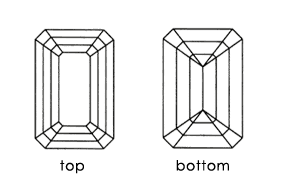
Brilliant cut diamonds are what people get when they get a diamond tattoo:
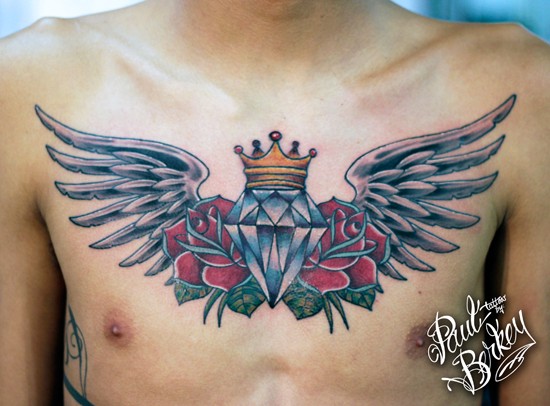
Mixed cuts don’t really seem to know what they want:
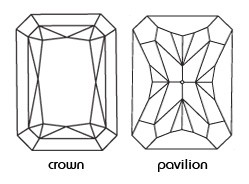
GIA also assigns round brilliant cut diamonds a “Cut Grade” that ranges from Excellent to Poor on their lab reports. Cut grades are determined by a complicated space computer that measures every single angle on the diamond, and then determines if those measurements fall into the range that will allow the diamond to return the maximum amount of sparkliness. Top nerds are still working on computer programs to determine cut grades for fancy shapes, but right now only round brilliants receive this special honor. Because symmetrical, well-proportioned diamonds are the most difficult to produce, they fetch a higher price.
How do I use this knowledge to spend less money?
Although rounds are easily the most popular shape, they waste the most rough diamond to cut and are therefore the most expensive. By choosing a fancy cut, you may be able to get more carats for your money.
What does it mean if a diamond is treated or clarity enhanced?
Some diamonds have undergone procedures to artificially enhance their appearance (it’s kind of like diamond plastic surgery!). These treatments significantly lower the value of a stone, and should always be disclosed. All you have to do is remember to ask the jeweler “Is this diamond natural and untreated?” If they say yes, get them to put their answer in writing! Common treatments include:
– HPHT: Stands for high pressure high temperature, and is used to permanently improve a diamond’s color/clarity.
– Laser Drilling: A laser is used to lighten or remove a dark inclusion, leaving a tiny tell-tale tunnel leading from the inclusion to the surface
– Fracture Filling: Cracks in a stone are filled with leaded glass to improve clarity. I would not recommend purchasing a fracture-filled stone, as the filling can fall out or discolor over time. GIA will not grade fracture filled stones.
Why do you keep talking about GIA and do I really need one of their certificates?
The Gemological Institute of America is an independent laboratory that assesses the quality and authenticity of diamonds and other gemstones. I keep talking about them because they are the guys who developed the diamond evaluation criteria and terminology that everyone uses all over the world. At the moment, their opinion of a diamond’s quality is the most respected you can find. But, as a friend of mine in the business says, “You’re not going to be walking around with a certificate on your hand.”
While a certificate from a lab like GIA is always a good thing, if you’re buying a stone from a respected business you don’t technically need one (Tiffany, for example, grades all of their diamonds in house). There are many legitimate reasons why a jeweler may not have sent their stone to GIA: Smaller diamonds may not be worth the cost of certification, a piece of estate jewelry may have been made before certification was the norm, or maybe a jeweler just couldn’t wait the approximately six business weeks it takes to get a stone back from the lab. GIA certified diamonds are also sold at a premium, so going with a diamond that hasn’t been through their labs is another way to potentially save some money. That being said, please don’t buy an uncertified diamond that seems too good to be true, because it probably is.
Are there other laboratories that issue certificates?
Yes, there are lots of other labs with acronyms: EGL USA, IGI, AGS, and HRD are all pretty respectable. They are known to be a bit more lenient with the grades they assign, so diamonds certified by these labs are often less expensive than similar stones graded by GIA. There are also lots of not-so-good labs out there, so if you see a certificate from a lab you aren’t familiar with, do some homework on the lab’s reputation before trusting their opinion.
How do I tell if a diamond matches the lab certificate I’m given?
Lab certificates usually show a diagram of the different inclusions and where they are positioned inside a diamond. If you look carefully at your diamond under magnification, you should see the same pattern of inclusions in the stone as on the diagram.
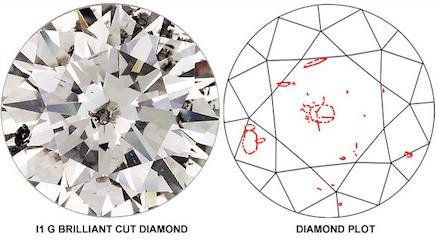
Diamond certificates also list the dimensions and weight of the stone, so you can check that those numbers all line up as well. To make it even easier, diamonds are often inscribed with a tiny serial number that matches the report number. You can also call whatever lab issued your report, and they can confirm that the serial number on your document is genuine.
If the diamond in question is already in a setting, or doesn’t have any obvious inclusions or inscriptions, some of these diagnostics may be hard to perform so, again, make sure you buy your stone from a reputable jeweler that you trust.
Wait, back up, how do I even tell if it’s a real diamond?
Did I mention trust your jeweler? The reality is that if you haven’t had the opportunity to look at a lot of diamonds yourself, the differences between real and fake will at first appear subtle and difficult to confirm. When you are shopping, ask jewelers if they have any cubic zirconia or other diamond simulants on hand so you can look at a real diamond next to a fake one and start to see the differences. Diamonds are really sparkly. Like, so much sparklier than any other jewel. They are also harder than any other jewel, so facet junctions should be sharp and and unabraded. A fun DIY test (it only works for round brilliant cuts) is to put the diamond, face down, on top of newspaper. If you can see the text through the stone, it’s NOT a diamond. They also make these heat sensitive electronic diamond testers that look like pens, but I’ve seen them give false negatives on genuine diamonds before, so, please, just work with a reputable business!
You keep saying to trust your jeweler — but how do I know who to trust??
All the normal ways you would determine how to trust a business! Have they been around a long time? Do they have professional credentials and positive reviews from other customers? Are they patient and nice and helpful, or do they pressure you into making a quick purchase? A good reputation is everything to a jeweler, and companies that misrepresent their wares do not stay in business long.
Make sure they have a return policy. Make sure that they write you a receipt and/or appraisal with all the details of your purchase, such as the size, quality, and whether your diamond is natural, synthetic or treated. Make sure they guarantee the information on the receipt, so that if you ever find they were incorrect you can get your money back. This is a normal request, and legitimate businesses will be happy to oblige.
Is it safe to buy a diamond online?
It’s always nice to vet expensive, one-of-a-kind things in person, but if you must purchase online please adhere to advice listed in preceding section. Also, purchasing from sellers located within your own country or on a third party website with buyer protection will significantly increase your chance of recourse should something happen.
Ok, cool, so how do I make sure my gesture of eternal love isn’t funding terrorists?
Technically any diamond for sale in a country that is a Kimberley Process member should be conflict free, but if you want to be truly sure I have three words for you:
Vintage, Canadian, Synthetic
Obviously, since I work with antiques I’m a bit biased, but why not consider a vintage diamond? Old mine cuts, antique rose cuts and old European cut diamonds were cut by hand and have a lovely, subtle sparkle that looks completely different from modern diamonds. Because they were mined a long time ago, you won’t be adding to any environmental or human strife with your purchase.
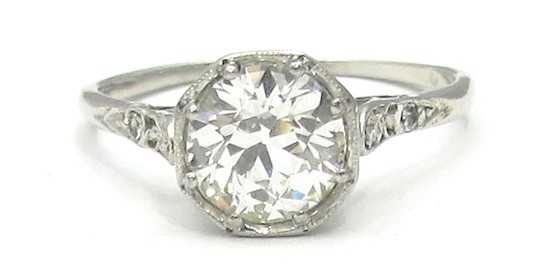
Vintage diamond ring with old European cut diamond
If you do prefer newer cuts, there is a big huge mine in Canada! Mining is always a dirty process, but at least Canada has the human rights and environmental standards of a first world country. Australia has a giant mine as well, but for whatever reason it’s harder to find dealers that work with stones that are guaranteed Australian origin.
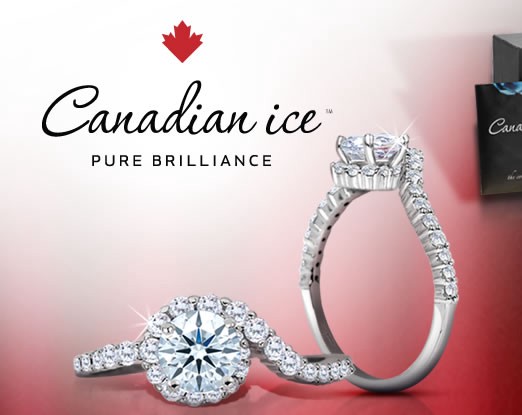
If you prefer newer cuts AND love science, you could always get a synthetic diamond. Synthetic diamonds are real diamonds, but they are grown in a lab by people instead of in the earth by nature. They can also be a lot less expensive than natural diamonds of the same color/clarity.
Is a diamond a good investment?
Oh jeez, I’m not an economist, but I’d say: in the long term, maybe, in the short term, no. If you purchase a diamond at a retail shop, obviously you’re paying a markup. If you try to resell your diamond right away, shops will offer to buy it at a wholesale price and you’ll take a hit. However, I have seen many instances where families who had a diamond in their possession for a generation or so were able to sell it for a profit. Also, should you ever need to escape to a new life, diamonds are easy to hide in the lining of your coat.
Previously: A Beginner’s Guide to Diamonds, Part I
Anna tracks down antique jewels for Gray & Davis by day, and helps run The Society for the Advancement of Social Studies by night. Ask her anything.